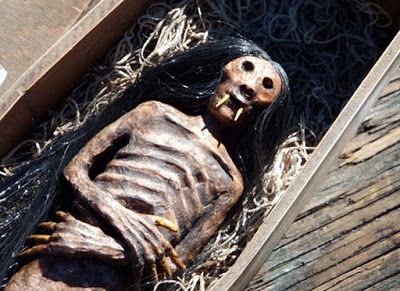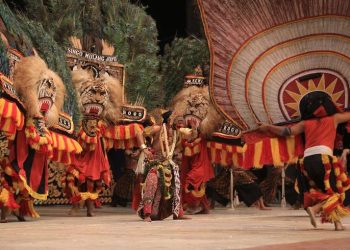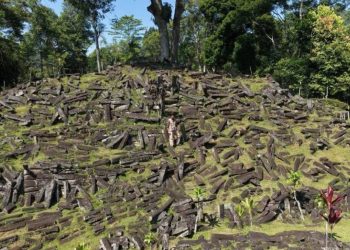Jakarta, Indonesia Sentinel — The Jenglot, a mysterious figure rooted in Indonesian mythology, remains a subject of fascination and debate among locals. Often associated with dark magic, the creature is believed to possess mystical powers.
The existence of the Jenglot has sparked controversy, with many questioning whether it is real or merely a product of folklore. Sightings and claims of ownership of Jenglots are reported primarily in regions such as Java, Kalimantan, and Bali.
Mysterious Creature
Jenglots are typically described as small humanoid figures, measuring around 10-20 centimeters in length. They have dark, rough, mummified-like skin, menacing skeletal faces with prominent fangs, and long hair and nails.
One enduring legend suggests that Jenglots were once humans who practiced forbidden black magic in pursuit of immortality. According to folklore, these practitioners became consumed by their powers, causing their bodies to shrink and distort.
Over time, elongated fangs protruded from their mouths, and their spirits became trapped in their tiny cursed forms—unable to pass on to the afterlife. Despite their diminutive size, Jenglots are believed to be alive, with claims that their hair and nails continue to grow over time.
Another believed that the Jenglot was a supranatural entity which has been captured. It was then manifest into physical form as the creature has been tamed. Therefore, many people believed that the Jenglot hold mystical powers, said to bring fortune
Mystical Powers and Beliefs
In Indonesian culture, Jenglots are often linked to supernatural rituals. They are believed to bring wealth, love, or protection, but are also feared for their association with curses and dark sorcery.
It is widely believed that Jenglots derive their power from consuming human blood. Owners are said to be responsible for feeding their Jenglot a daily drop of blood. Failure to do so, according to legend, could result in misfortune or disaster.
Scientific Investigations and Skepticism
The Jenglot has not escaped scientific scrutiny. Forensic researchers at Cipto Mangunkusumo Hospital in Jakarta once examined a Jenglot specimen and reportedly found that its skin shared DNA similarities with primates, including humans.
Study Finds Nerve Stimulation Therapy Effectively Treating Severe Depression
However, other investigations have dismissed these claims, suggesting instead that Jenglots are artificially constructed using taxidermy techniques. Some experts believe they are crafted from parts of animals, such as monkey heads combined with horsehair tails.
There is also a prevailing opinion that Jenglots are merely human-made art pieces, devoid of any mystical power.
Whether a supernatural entity or a carefully crafted hoax, the Jenglot continues to captivate imaginations, blurring the line between myth, faith, and science in Indonesia’s rich cultural tapestry.
(Raidi/Agung)

























